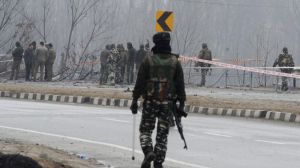A real jungle in a concrete one
CHANDIGARH, June 4: From this issue onward we are start the `Natural Heritage Series on National Parks and Wildlife Sanctuaries of India'. T...

CHANDIGARH, June 4: From this issue onward we are start the `Natural Heritage Series on National Parks and Wildlife Sanctuaries of India’. To begin with, we choose one in our neighbourhood: the Green Lung of Mumbai, the Sanjay Gandhi National Park or popularly known as the Borivli National Park.
Jungles in Mumbai? Impossible! We only have concrete jungles. Not true. We have a very good forest in suburban Mumbai. And most of us have visited this green belt — the only national park of our city — without being aware of its importance. For instance, did you know that in all of Asia, the Sanjay Gandhi National Park is the only national park existing within a metropolis limit? Did you also know that it is one of the most visited parks in the world?
For most of us, this park is nothing more than a picnic spot. But ask a naturalist and the answer will be different. For him, this a haven of birds, butterflies, wild flowers and many animals. The total area of this park is 104 sq km, out of which a small portion is developed into a recreational area which is open to the common man. The remaining area is a protected forest. The spread of forest covers a vast area and the access roads start from Borivli, Goregaon, Mulund, Thane and beyond Vasai. Under this vast green cover nearly 1,000 species of flowering plants, 150 species of butterflies, 269 species of birds, 36 species of reptiles and 36 species of mammals survive in harmony.
The forest being a moist semi-deciduous one, you can see the changing phases of the park from summer to monsoon and then to winter. The beauty of each season is splendid. The monsoon is one of the best times to visit the park. With flowing streams, the animal and plant life comes alive. Some monsoon- specific plants like lilies, wild turmeric and wild yam decorate the pathways with their showy flowers. If one is lucky, you can also find the Karvi flowering — the beautiful lavender flowers — which appear once in seven years. At the same time, there is a boom in the insect world. One can see a variety of caterpillars, butterflies, moths, beetles, grasshoppers and mantids. Bird life is more audible and visible in the winter. The bulbuls, drongos, hornbills, woodpeckers, parakeet and robins seem to come together to form a forest orchestra. The summer embarks its appearance when the deciduous trees start bearing flowers. The orange flowers of the flame of forest, the deep pink of the red silk cotton, the yellowof the Indian laburnum and the red of the pangara tree sprinkle colour in an otherwise drab and dry environ.
Among the big animals, the top predator of this forest is the leopard whose tell-tale marks are often found in form of droppings, pug marks and bark scratchings. The hanuman langur and bonnet macaques, sambar, spotted deer, four-horned antelope, mouse deer and wild boar are some of the other mammals which are occasionally sighted.
Apart from its aesthetic value, the park provides drinking water to the city. Nearly 10 per cent of the water supply is supplied from two major lakes situated inside the park: Tulsi and Vihar. The forests surrounding these lakes acts as a sponge that harnesses the rainwater and keep the lakes filled with water round the year.
Though the picture of the park seems to be very pretty, but like any protected area this park faces tremendous pressure from encroachments, mining operations and logging. If preventive measures are not taken to control these illegal and anti-environment activities, our grand children will not get the opportunity to explore its wilderness. And much before that our taps will go dry. Before it is too late, Mumbai should stop looking at this forest as a mere picnic spot. The park is the greatest living example of how development and nature can co-exist — harmoniously.
Photos





- 01
- 02
- 03
- 04
- 05


























